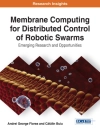Explore a comprehensive and state-of-the-art presentation of real-time electromagnetic transient simulation technology by leaders in the field
Real-Time Electromagnetic Transient Simulation of AC-DC Networks delivers a detailed exposition of field programmable gate array (FPGA) hardware based real-time electromagnetic transient (EMT) emulation for all fundamental equipment used in AC-DC power grids. The book focuses specifically on detailed device-level models for their hardware realization in a massively parallel and deeply pipelined manner as well as decomposition techniques for emulating large systems.
Each chapter contains fundamental concepts, apparatus models, solution algorithms, and hardware emulation to assist the reader in understanding the material contained within. Case studies are peppered throughout the book, ranging from small didactic test circuits to realistically sized large-scale AC-DC grids.
The book also provides introductions to FPGA and hardware-in-the-loop (HIL) emulation procedures, and large-scale networks constructed by the foundational components described in earlier chapters. With a strong focus on high-voltage direct-current power transmission grid applications, Real-Time Electromagnetic Transient Simulation of AC-DC Networks covers both system-level and device-level mathematical models. Readers will also enjoy the inclusion of:
* A thorough introduction to field programmable gate array technology, including the evolution of FPGAs, technology trends, hardware architectures, and programming tools
* An exploration of classical power system components, e.g., linear and nonlinear passive power system components, transmission lines, power transformers, rotating machines, and protective relays
* A comprehensive discussion of power semiconductor switches and converters, i.e., AC-DC and DC-DC converters, and specific power electronic apparatus such as DC circuit breakers
* An examination of decomposition techniques used at the equipment-level as well as the large-scale system-level for real-time EMT emulation of AC-DC networks
* Chapters that are supported by simulation results from well-defined test cases and the corresponding system parameters are provided in the Appendix
Perfect for graduate students and professional engineers studying or working in electrical power engineering, Real-Time Electromagnetic Transient Simulation of AC-DC Networks will also earn a place in the libraries of simulation specialists, senior modeling and simulation engineers, planning and design engineers, and system studies engineers.
A propos de l’auteur
Venkata Dinavahi, Ph D, PEng, FIEEE, is a Professor in the Department of Electrical and Computer Engineering at the University of Alberta in Edmonton, Alberta, Canada. He received the BEng degree from the Visveswaraya National Institute of Technology (VNIT), Nagpur, India, in 1993, the MTech degree from the Indian Institute of Technology (IIT) Kanpur, India, in 1996, and a Ph D in Electrical and Computer Engineering from the University of Toronto, Ontario, Canada, in 2000. He was the founding chair of the IEEE Power & Energy Society (PES) Task Force on Interfacing Techniques for Simulation Tools from 2006-2014. He contributed to several IEEE PES Working Groups and Task Forces notably in the Analytical Methods for Power Systems (AMPS) committee. He is a Fellow of IEEE, a member of CIGRÉ and a Professional Engineer in the Province of Alberta. He was the recipient of the 2018 Outstanding Engineer Award from the IEEE PES/IAS Northern Canada Chapter.
Ning Lin, Ph D, is a Postdoctoral Researcher at the University of Alberta. He received the BSc and MSc degrees in Electrical Engineering from Zhejiang University, China, in 2008 and 2011, respectively, and a Ph D in Electrical and Computer Engineering from the University of Alberta, Canada, in 2018. From 2011 to 2014, he worked as an engineer on power system automation, flexible AC transmission system (FACTS), and high-voltage direct current (HVDC). His research interests include electromagnetic transient simulation, transient stability analysis, real-time simulation, AC/DC grids, parallel processing, and high-performance computing of power systems and power electronics.












